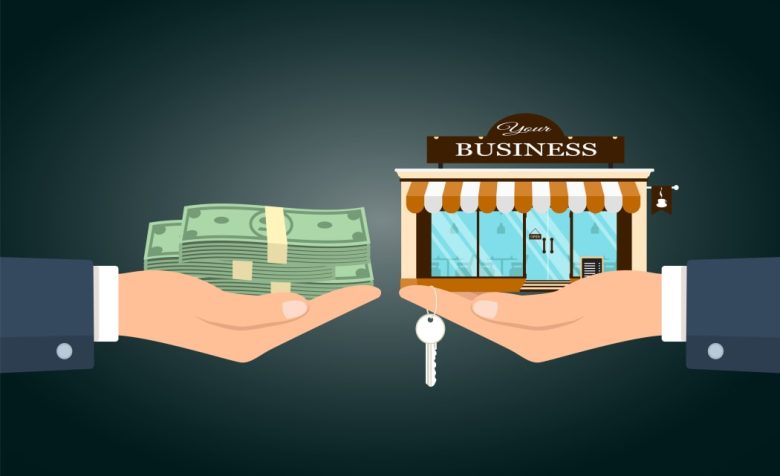Starting a thrift store is one of the best and most profitable things you can do, especially with more people working part-time and wanting to own a business. Whether you’re a stay-at-home mom, a college student, or looking to escape the grind of a 9-to-5 job, a thrift store is an easy way to become an independent entrepreneur. You can quickly transform an ordinary garage sale into a highly profitable treasure with a little negotiating skill, a keen eye, and a lot of dedication. We live in an age where buying and selling have become incredibly easy, thanks to thrift sites like eBay and Facebook Marketplace. What’s even more thrilling? You can launch this business with minimal capital and expand it at your discretion.
Today, we’ll show you how to build a successful thrift store that turns old items and collectibles into a recurring source of income. It’s no longer just a hobby; it’s a way to achieve financial freedom and entrepreneurial happiness.
Understanding the Flipping Business Model:
Flipping secondhand goods is the process of buying items for less than you paid for them and then selling them for a profit. This business strategy is fascinating because it’s easy to understand, has low operating costs, and can be applied to almost any hobby or niche. There are countless opportunities to find vintage trinkets, furniture, books, designer clothing, tools, and more. The key to success is to recognize value where others don’t, do quick market research, and make smart purchasing decisions. You can make money by buying low and selling high or selling your inventory quickly.
Finding Inventory: Where to Find Hidden Treasures
Finding items that can be resold is the first step in secondhand flipping. Garage sales, estate sales, flea markets, thrift stores, and online marketplaces like Craigslist and Facebook Marketplace are all excellent places to start. Sellers often want to get rid of unwanted items and sell valuables for very low prices. Furthermore, get to know the sellers at estate sales and thrift stores in your area. They can offer you a competitive price before the sale. Don’t forget the power of your local network. Many people give items away for free and then sell them.
Once you feel confident in your expertise, consider attracting more customers through auction houses, storage lot auctions, and yard sales. The more ways you have to find items, the more likely you are to find something that can be sold for a higher price.
Research and Price Your Items Well:
Always do your homework before you buy anything. Check eBay’s “Completed Listings” filter to find out how much similar items have sold for in the past. This indicator shows demand and helps you avoid overspending. When pricing something you want to sell, consider marketplace fees, shipping, and your desired profit margin. The best price is slightly below market value, so you can sell quickly and make a substantial profit.
Value depends on factors such as brand name, condition, rarity, and demand. Unique, old, or collectible items tend to be pricier than others. Over time, you’ll develop a beneficial sense of what sells well and what doesn’t. This intuition is essential for long-term success.
Best Places to Sell: Online and Offline Marketplaces
The best way to get your items noticed is to sell them online. eBay is still one of the best places to buy all kinds of items, especially collectibles, electronics, and used items. Facebook Marketplace and OfferUp are excellent for selling in your area because you don’t have to pay shipping costs. Poshmark, Depop, and Mercari are excellent for selling clothing, accessories, and small electronics. Craigslist and Nextdoor can help you sell furniture and other large items quickly in your area.
If you would rather not sell online, you can host your garage sale or set up a booth at a flea market or antique fair near you. If you have a lot of stuff to sell, it might be worth renting a small shop or storage space. Furthermore, don’t forget about professional communities like Reddit, Discord groups, and collector forums: these are excellent places to find professionally refurbished items.
Growth: Turning Your Side Job into a Full-Time Job
Once you’ve mastered the basics and have established a reliable cash flow, it’s time to expand your resale business. This might involve stocking up on inventory, hiring someone to do specific tasks like photography or shipping, or automating your ads with cross-posting software. You can also build a brand by creating a dedicated website or online store to sell curated or themed items.
To know if your business is healthy, you need to track your profit, loss, and return on investment. You can use a spreadsheet or accounting software like QuickBooks to track your finances. You might also consider going wholesale or creating content about your resale journey, like a YouTube channel, to generate more revenue as your profile grows.
Avoiding Common Mistakes in the Flipping Game:
Even resellers who have been in business for a while make mistakes from time to time. Some mistakes to avoid include paying too much for your inventory, not paying attention to the condition of the items, not counting on shipping costs, and holding on to slow-moving items for too long. Don’t buy too many items at once unless you know they will sell. Furthermore, make sure your listings are factual. Honesty builds trust and positive reviews over time.
Another issue is time management. While house hunting may seem easy, it requires great effort to find items, clean them, take photos, list them, communicate with customers, pack them, and ship them. An efficient workflow system can make a huge difference.
Conclusion:
A simple search for treasures from a garage sale can quickly grow into a lucrative, flexible, and rewarding business. House hunting is a thrilling way to earn money because there are few barriers to entry and endless growth opportunities. To start, all you need is determination, curiosity, and a willingness to learn; you don’t need a lot of money or formal education. If you learn to recognize value, gather information from various sources, and persevere, house hunting can grow from a weekend hobby to a full-time career.
FAQs:
1. How much money do I need to start a house-hunting business?
You can start with a small amount, $50 to $100. Start with small, low-risk items and use the money you earn to buy more.
2. What are the best things to sell to a beginner?
Books, electronics, designer clothes, used toys, and small furniture are all good for beginners because they are always in demand and easy to research.
3. How can you determine the value of an item before you buy it?
You can use resources like eBay sold items, Google Lens, or price comparison apps to obtain an idea of the current value of an item.
4. Is it legal to resell items? Do I need a license to resell?
Yes, reselling is legal. You may not need a license at first, but once your business starts making a profit, it’s a beneficial idea to register with the government for tax and legal protection.
5. How long does it take to start making a profit?
Some sellers are profitable in the first week. The frequency of your purchases and your pricing and marketing strategies will determine their profitability.




